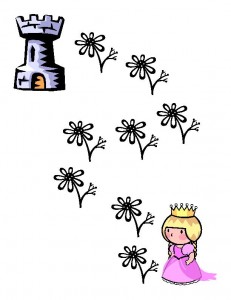 Falling in Love with your Family by Alison
Falling in Love with your Family by Alison
“Behavior that is measured is improved.” –Glenn Latham
The statement is apparently true for healthy eating. One recent study found…
“Nearly 1,700 Kaiser Permanente study participants agreed to exercise and adopt a healthy diet, but those who took the extra step of keeping track of what they consumed got something of a booster charge in their weight loss. . . .Those who kept a food diary every day of the week dropped up to 20 pounds, more than twice as much as those who didn’t record their every bite.”
But this post isn’t about or getting your chocolate cheesecake loving self back into those skinny jeans after New Years. It’s about improving your family relationships. Can simply measuring behavior really help in your family? Here are three ways to use this easy technique to your advantage.
When to use it: To increase motivation for children to improve their behavior in many different areas.
In a Nutshell: Use paper, a jar, or other recording method to track progress and offer reinforcement.
1. Chart it out
Remember those gold stars from Elementary School? Many kids respond very well to a visual representation of their behavior. Simply isolate a behavior you want to encourage, such as going potty in the potty (and not on the restaurant floor…don’t ask), picking up toys, completing homework, doing chores without complaint, etc. Choose something that excites your child and decide on a reward together. Then, maybe when your son fills in 5 Lightning McQueen race cars for each day making his bed, he knows he gets to choose a hotwheels from the store or play cars with you after dinner. Charts don’t have to be fancy or complicated; just grab some construction paper, or use the computer. I made these sample chart with Microsoft Word in all of 10 minutes (with a cat under my feet and a six-year-old reading to me). You could probably shave off a minute or two without feline interference and Green Eggs and Ham. Remember to give your child smiles and encouragement as they progress on their chart. Remember, the younger the child, the more immediate the reward needs to be.
One of my favorite motivators is the good ol’ bean jar. When we need a little more cooperation or if siblings are starting to get feisty, I love pulling out a mason jar. We decide on a reward, like a family pizza and movie night, and teach what we are looking for. Then, each time we see the desired behavior, we put in some beans. I even give them beans when they come up to me smiling saccharin smiles, holding hands, and saying, “Look how well we are getting along, Mom!” Heck, at least they’re practicing!
3. Keep Data
As you practice new discipline techniques, timing behavior is also useful. When I’ve had kids going through a tantrum phase, measuring behavior has been my friend. Instead of getting fried and frazzled by the unruly one, it has helped to just look at the clock and see how long the tantrum lasts. Sometimes, what seems like an eternity of outrage was actually only 4 minutes. When the theatrics really did last 45 minutes, you’ll at least have bragging rights when you call your Mom. And as you apply interventions, such as planned ignoring, it is useful to see the progress your child is making. You can also keep data for yourself, like keeping Positive Reinforcement Chart, or marking a heart on your calendar every time you do something nice for your sweetheart. See if your behavior improves as it is measured!
Measuring behavior for behavior improvement is only limited by your imagination. You could let a child work towards earning a favorite breakfast cereal by accumulating 10 stickers on the unopened box, or earn a trip to Chuck E. Cheese by filling a cup with previously purchased tokens. You could trace your daughters hand and let her decorate the fingernails when she practices the piano to earn a manicure by mom, or get scoops of paper ice cream on a cone before she earns the real thing. The sky’s the limit! Have fun, and see how much the behavior improves around your house with just a bit of measurement.
Try it Today: Make a simple chart with your child’s help. Pick a target behavior and a reward. Let us know how it goes!
(Just a note…some child development experts and nutritionists oppose using food as a reward. I’ve found that if you don’t usually have many treats, food rewards in moderation can be useful and harmless. If you are concerned about unhealthy connections children may make with food, use rewards such as an activity or a small toy.)



